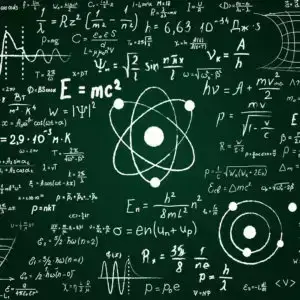NASA scientists are intensifying their investigation into a vision disorder that affects 70% of astronauts on long-duration space missions, as new research reveals the condition poses mounting risks for future Mars exploration 1 2. Space- Associated Neuro-Ocular Syndrome (SANS) causes crew members to experience blurred reading vision, swollen optic discs, and flattened eyeballs that can persist for years after returning to Earth



Maybe “2001 A Space Odyssey” had the right idea … spinning a whole big station to produce 1G. (Arthur C. Clarke was part of the writing team.)
Discussion here sez it takes a radius of 224m at 2rpm: https://space.stackexchange.com/questions/281/what-would-the-size-and-rotation-of-a-station-need-to-be-to-produce-1g-gravity-f
At this site you can play with the parameters: https://www.artificial-gravity.com/sw/SpinCalc/
It frustrates me that nobody has attempted construction of a Coriolis station yet. They are so prolific throughout science fiction and theoretical scientific literature, and they have been prolific for ages.
Detractors of Coriolis stations will usually say that the scale required for the optimal 1G is not feasible, but the physics behind the idea are more or less sound.
We have the technology to build one, it’s just a matter of profitability. Nobody wants to burn their trillions on a moonshot.
The matierals science is actually the bigger hurdle than profitability - we’d need carbon nanotubes or similar to handle the tensile stress of a rotating structure that big, since conventional materials would literally tear themselves apart at the rotation speeds needed for 1g.
224m radius from the previous comment equates to 1400m circumference. With a crossbrace of another 900m (assuming an X shape). And a bit of stuff in the middle to affix the solar collector arrays (which must be stationary).
For comparison, the ISS is 109m long.
We’d better get to work!
NASA’s budget just got gutted by the anti science party.
Thanks for reminding me. :(
I’ve seen a video (maybe it was Smarter Every Day?) about a research team experimenting with the effects and acclimation potential of small-radius coriolis stations. From what I remember we can get used to the centrifugal force well enough, even though experiencing coriolis forces across the length of your body is certainly an unusual situation.
Profitability is a huge problem regardless though. The ISS is getting destroyed by the end of the decade, and no replacement is seriously planned. The ISS was born in a geopolitical context of unprecedented international cooperation in the '90s, and that era is long gone. Unless China, the EU or US (lmao) wants to finance an ISS replacement all on their lonesome, not much will happen there for the foreseeable future. There’s not a whole lot “because we can” budgets going around these days.
The scale required in order to avoid side effects of the Coriolis effect is huge. For example, the running scene in 2001 could never happen. He’d be constantly falling over.
We also don’t need a full ring e.g. Project Hail Mary.
At that point just build a death star
Nah, wholly uneven centripedal forces with a spinning sphere. The entire point of a ring is that all along the outer surface is the same force. A sphere would have a gradient depending on lattitude. Maybe useful for experiments, but it’d likely be uncomfortable moving around in it.
Not if you make a proper core instead of the weaponry then you could get gravity based on a highly compressed material creating the gravitational force. If you go big youre going all in.
But then you’d have to move the mass equivalence of the Earth itself, which completely and utterly ruins the entire point of a space craft. Just move the entire Earth like in that one Chinese movie at that point…
Seriously why even bother studying the health effects of zero G? Figure out how to build a spinning craft instead and don’t worry about health effects.
Did the whole “space craft rotates to simulate gravity” thing really begin with 2001?
I doubt it … but that’s a really good question … to answer it you’d need to look at at least a century and a half of science fiction. I don’t think Jules Verne thought of it (haven’t read all his stuff), but it might have been Aristotle for all I know.
Yeah seems like something Clarke, Heinlein or Asimov could’ve come up with. But also seems like an idea that could go back to Newton’s time.
I think von Braun may be the originator but I could be wrong, you be surprised how incestuous the relationship between science and science fiction is. Regardless 2001 is probably what popularized it.
Its not incest. Its progression. You have to imagine something to create it. Just look at the original star trek and cell phones. They were not two sisters getting down with one another. At best they were 2nd cousins who meet at the family reunion once a year and hook up.
As a kid, I remember hearing about simulating gravity by spinning a space ship. I was excited to see it happen in 2001, so my recollection is that it was already a known concept, and I was just a kid at the time.
Easier said than done